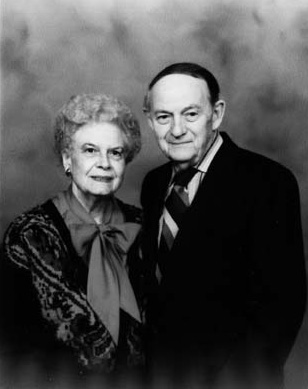 WILLIAM EVERETT LAND, A&S 1928, 1933 (PhD), had a long and successful career as a chemist and chemical engineer. He worked primarily with the U.S. Navy, where he was director of explosives research and development and served as chairman of the Ammunition and High Explosives Panel.
WILLIAM EVERETT LAND, A&S 1928, 1933 (PhD), had a long and successful career as a chemist and chemical engineer. He worked primarily with the U.S. Navy, where he was director of explosives research and development and served as chairman of the Ammunition and High Explosives Panel.
Dr. Land, who died in 2002, and his wife, ARNELL LEWIS LAND, were avid supporters of the arts. In addition to this professorship, the Lands also supported scholarships that benefit undergraduate students at the Peabody Conservatory, in the Department of Chemistry at the Krieger School of Arts and Sciences, and in chemical engineering at the Whiting School of Engineering.